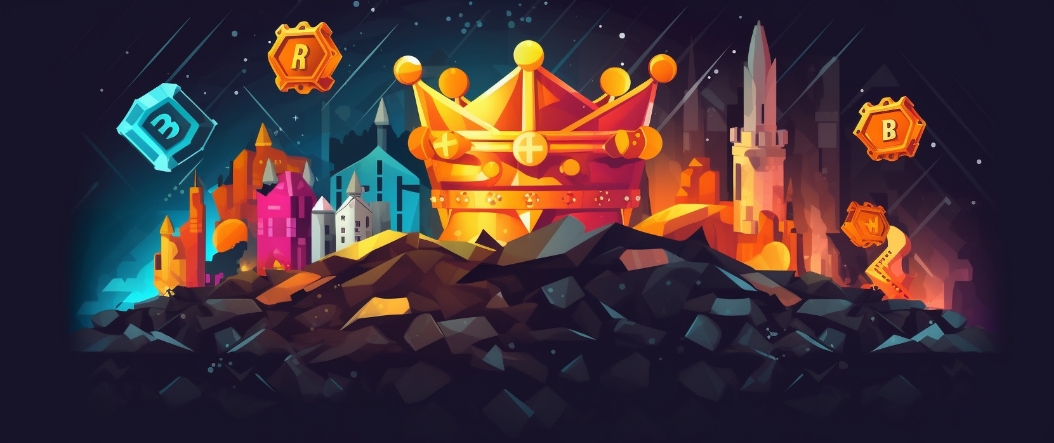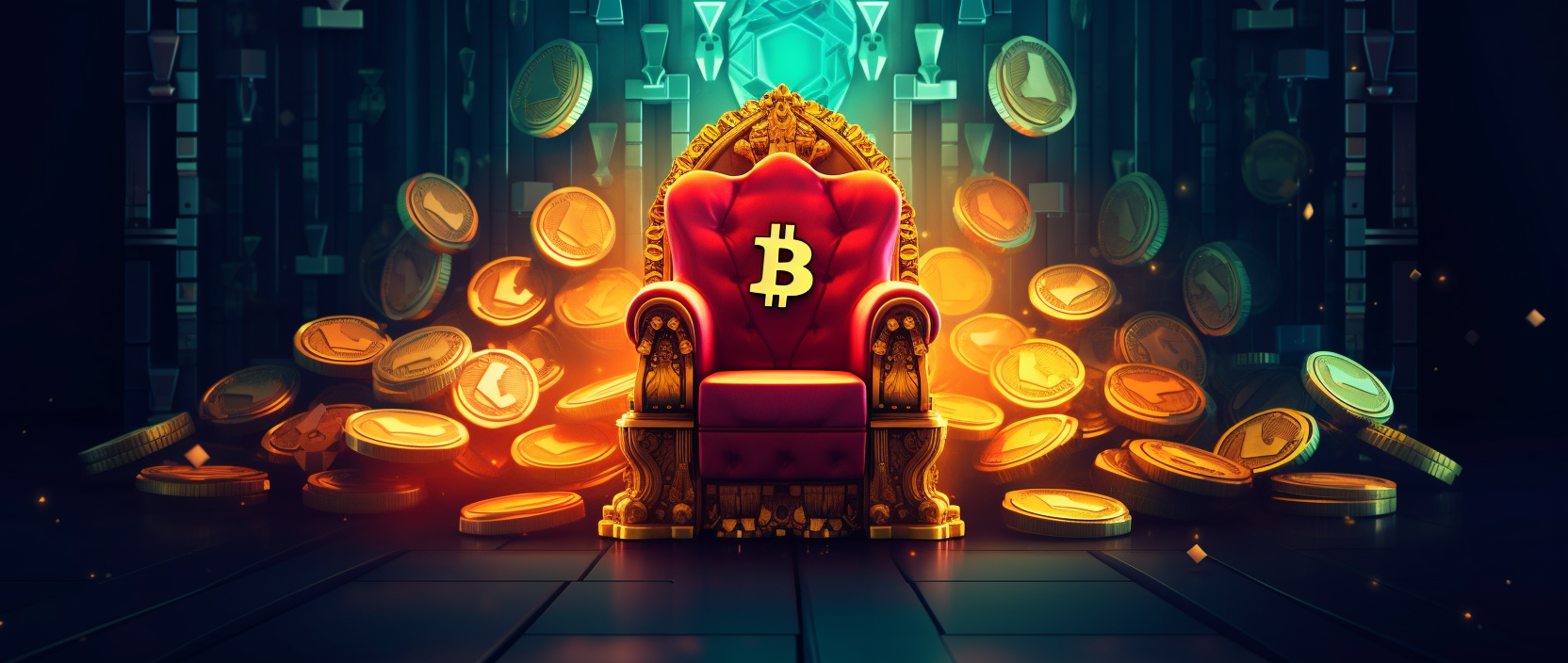Royalty NFT is a special form of NFT that allows authors of digital works to retain rights to their creations and receive compensation with each subsequent sale or resale.
Contents:
- Introduction to Royalty NFTs
- Why are Royalty NFTs Needed?
- The Role of Trading Platforms in the Distribution and Earning of Royalties on NFTs
- Changes in NFT under the influence of evolving markets
- Perspectives of NFT Royalties: What the Future Holds

Introduction to Royalty NFTs
Non-Fungible Tokens (NFTs) have become a key technical paradigm and a building block of the Web3 ecosystem. While the Ethereum community led the growth of NFTs in 2020 and 2021, other blockchain networks such as Solana and even Bitcoin have followed suit by launching major projects on their own blockchains.
Creators have always sought various sources of income from their work. In the world of Web2, there are laws regulating the protection of intellectual property, but ensuring their compliance and protecting the interests of creators has proven to be a challenging task.
Royalties represent passive income that creators receive from each transaction related to their finished product. This product can be:
- music,
- art,
- gaming utilities, or any other form of digital asset.
While creators earn from the initial sale of their NFTs, they can also receive royalties for each subsequent purchase of that NFT.
Why are Royalty NFTs Needed?
From the principles and economics standpoint, NFT royalties offer several advantages for the ecosystem. In the Web2 creative fields such as music, art, and graphic design, it is difficult to track subsequent purchases of works. Furthermore, contracts between creative professionals and well-known studios or corporations are often unequal and disadvantageous for the creators of the works.
The Web3 model aims to address this imbalance in economic relationships. In Web3, any piece of work created in the form of an NFT can be traced using blockchain technology. This allows the creator to maintain control over their creation and receive royalties at every stage of its sale.

In addition, creators can list their NFTs on the market and sell them, without the market itself requiring royalty payments upon purchase. NFTs play an important role as they enable the creation of an economy around creators, which is not always characteristic of Web2 business models. For many NFT collections, royalties have become an excellent source of funding operational expenses.
By creating multiple accounts or wallets, market participants can artificially inflate the price of NFTs or other digital assets. Such accounts are often used for mutual purchase of NFTs, creating an illusion of demand and driving up prices.
To an observer, it may appear that there is increased demand for NFTs, but in reality, that is not the case. The introduction of royalties ensures that a certain fee is charged for each transaction between accounts of fictitious traders. Consequently, the costs of maintaining a high price quickly escalate, making further price manipulation more difficult.
The Role of Trading Platforms in the Distribution and Earning of Royalties on NFTs
Trading platforms play a crucial role in the Web3 world by expanding the NFT ecosystem and facilitating commerce. Each blockchain network has its own trading platforms, as well as cross-chain marketplaces for buying and selling digital assets. They not only create an environment for NFTs with royalties but also enhance trust in projects by featuring them on their platforms.
Some NFT trading platforms may charge royalties for every NFT sale on their platform. However, this can have a negative impact on the NFT ecosystem and trading volumes. NFT trading volumes are an important indicator of the effectiveness and state of NFT collections and the overall ecosystem.
Some NFT marketplaces, including OpenSea, have attempted to change this practice and introduce optional licensing royalties, allowing buyers to decide whether they want to pay creators a royalty fee. However, such a policy can harm creators as it reduces their steady source of income. It makes the economy for creators less sustainable and competitive, especially for newcomers who will find it harder to compete with established creative studios. Thus, market-determined licensing royalties can have both positive and negative impacts on the innovation of this industry.
Here is a table that summarizes the main points:
| Role of NFT marketplaces in Web3 | Impact of licensing fees on the NFT ecosystem |
|---|---|
| Expansion of the NFT ecosystem | May limit the volume of NFT trading. |
| Creation of commerce | Affects trust in NFT projects and collections. |
| Increased trust | Reduction in creators' recurring income. |
| Setting royalties | Possible decrease in trading activity on marketplaces. |
Changes in NFT under the influence of evolving markets
The market for NFT trading platforms is experiencing a period of intense growth, which has been fueled by aggressive distribution methods and transactions involving NFTs. Due to the fierce competition brought about by the emergence of new NFT marketplaces, liquidity in the market is significantly limited.
OpenSea, Magic Eden, Sudoswap, X2Y2, and Blur are competing to attract creators and users, as well as to provide sufficient liquidity. This competition has led to intense battles over licensing fees, and the reduction of these fees has had a negative impact on the overall health of the ecosystem. As a result, NFT projects have been forced to decrease the size of their licensing royalties, and even collectible items such as Bored Ape Yacht Club and Azuki have not been exempt from this trend.
High competition has led to a decrease in licensing fees, but some trading platforms have also started prohibiting the sale of NFTs on secondary markets without paying licensing fees. This move has sparked disagreements among critics, while others view it as a measure to protect the interests of creators.

The inability to collect royalties on NFT collections in certain countries creates financial problems for platforms and makes them overly dependent on venture capital. This can become an issue as venture capital firms are still learning to understand this space and develop their financing strategies for NFT projects.
Perspectives of NFT Royalties: What the Future Holds
In 2022, the world of Web3 faced numerous challenges. Fraud thrived, and prices were influenced by the macroeconomic situation, leading to continued decline. Despite these obstacles, licensing fees for NFTs could play a crucial role in generating income for creators. This approach could also help companies attract and retain customers by incentivizing the purchase and sale of collectible items and returning a portion of the revenue to their clients, creating a more positive brand image.
With new concepts such as dynamic NFTs, where the metadata of NFTs can be changed or updated, new opportunities arise for attracting loyal users. NFTs continue to garner attention and have an impact on the loyalty economy in Web3. Intelligent NFTs add an element of artificial intelligence (AI) to NFTs, allowing owners to feel that their profile pictures (PFPs) better align with their real personality through the application of AI.
However, royalties for NFTs will remain relevant, and companies utilizing this business model may have a competitive advantage in the coming years.



